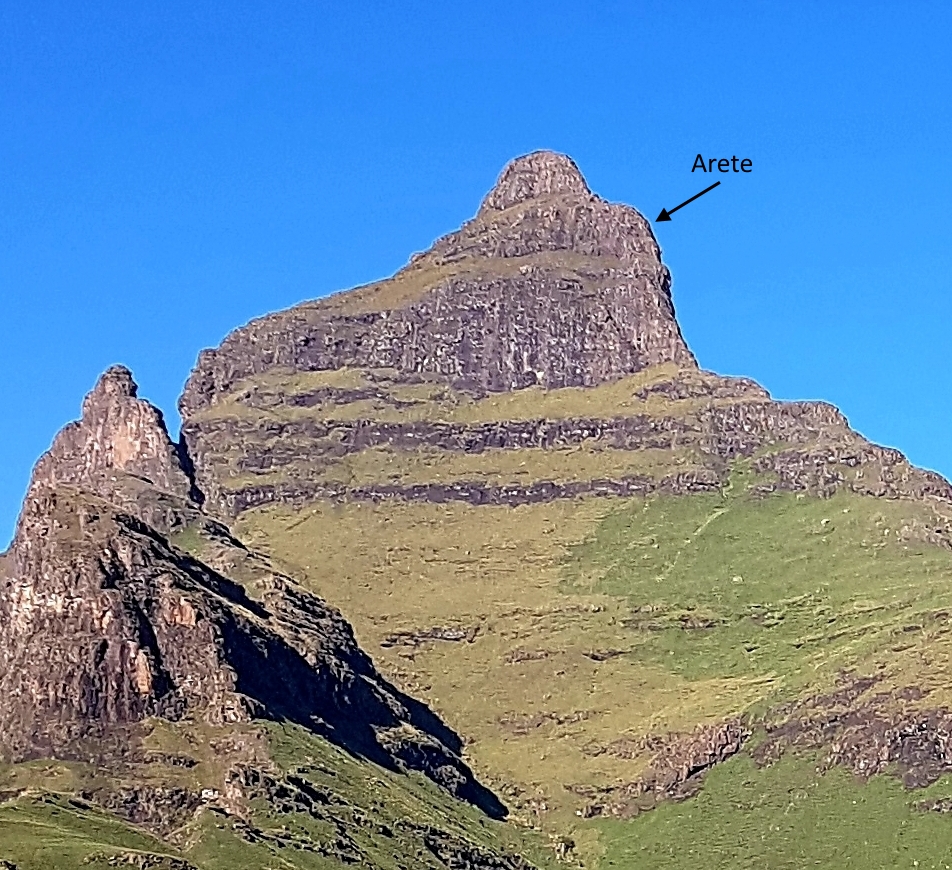Mountain Terminology
Leeward side and windward side- This refers to the different slopes of a mountain side and the prevailing wind direction. The Windward side is the side that faces the wind and the lee-side the opposite slope which is more sheltered.

Rivers- true right and true left- the sides or banks of streams and rivers are described as if looking in the direction of the flow.

Cairn- a small pile of rocks or stones, which mark significant points such as the summit of a hill. When placed at intervals they can be used as route markers on a mountain.


Arête- a sharp and usually steep ridge on a mountain. Usually made of rock but can also be of ice or snow. It can also be a small short sharp ridge in a rock climbing pitch.

Scree- areas of a small stones or gravel usually below major cliffs, caused by frosting action in rock.

Boulder field- larger rocks found in areas below cliffs and sometimes in river beds.

Shoulder- a flat area on a ridge of mountain.
Headwall- a mountain face of rock near or leading to the summit.
Gendarme- a pinnacle of rock standing on a sharp ridge of mountain.
Col, Saddle or Nek– a gap in a ridge below two points of mountain, (The word “Nek” is a South African term).

Gully- a narrow hollow area in a mountain.

Couloir- a snow or ice filled gully. French meaning for “passage”.

Aiguille- a large, sharp peak. French meaning for “needle”.

Tarn– A small pond or lake either situated on a ridge or beside a glacierT

 Follow
Follow